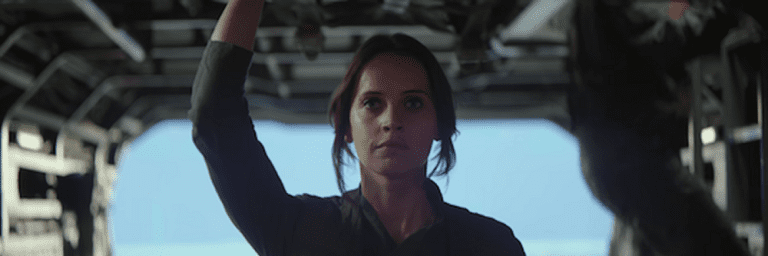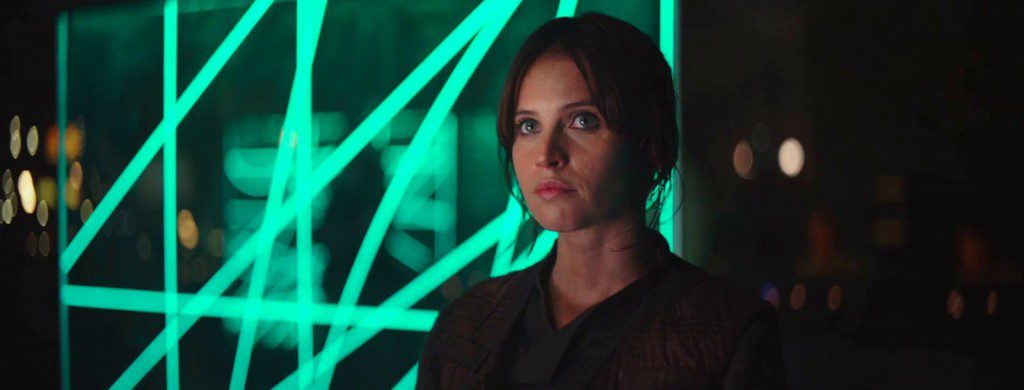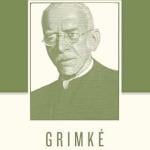 For the haziest of reasons, there is a near taboo on the portrayal of adult brothers and sisters in film
For the haziest of reasons, there is a near taboo on the portrayal of adult brothers and sisters in film
In When Harry Met Sally, Billy Crystal and Meg Ryan famously argued over whether men and women could be friends without one of them wanting to have sex with the other. When I first saw the film 11 years ago, I found it funny, entertaining and a good conversation piece, but I couldn’t help thinking that Crystal and Ryan — neither of whom seemed to have any family beyond their fellow single New Yorkers — had overlooked something. I could certainly think of a few women in my own life for whom this was a non-issue, and one of them was sitting right next to me in the theatre. I refer, of course, to my sister.
In Hollywood, it is common to find stories about brother-sister relationships if both sides of the equation happen to be children. But among adults, men and women typically interact only if there exists the slightest possibility of sex or romance between them. If an adult does have a sibling, it almost always turns out that the man has a brother, while the woman has a sister. Sitcoms, with their traditional focus on the nuclear family, are a perfect case in point. Take The Simpsons. The complex mix of jealousy, mutual annoyance and heartwarming moral support between Bart and Lisa is among that show’s most endearing aspects. But among the adults, Marge has two sisters, while Homer, we discover in one episode, has a half-brother. It is as though the relatives were an extension of the principal characters, right down to their gender.
Television is such a vast medium, and the potential for diversity so great, that exceptions to this rule are not impossible to find (for example, the siblings played by David Schwimmer and Courtney Cox Arquette on Friends, Mulder’s abducted sister on The X-Files). But movies about adult brother-sister relationships are an exceptionally rare breed. Thus it is rather remarkable that we have not one, but two very different films that touch on this theme in theatres at the moment. Vertical Limit is a typically explosive would-be blockbuster, in which Chris O’Donnell rounds up a rescue team to save his sister, played by Robin Tunney, who is trapped in a crevasse following a deadly avalanche. A very different film is You Can Count on Me, which won the Grand Jury Prize at this year’s Sundance film festival. Critics have lavished praise on Ken Lonergan’s intimate tale of a man who returns to his sister’s home and, for a while at least, becomes a sort of surrogate father to her eight-year-old son. Several reviewers have even observed that the film’s central relationship, between brother and sister, is rarely explored in film.
Although I have two sisters myself, I must admit I did not notice this blind spot in our popular culture until about four years ago, when two European films about adult siblings came to Vancouver only a few weeks apart from each other. In André Téchiné’s Ma Saison Préférée (My Favourite Season), Catherine Deneuve and Daniel Auteuil play a middle-aged brother and sister who renew their childhood intimacy while coping with their mother’s illness and the possible breakdown of Deneuve’s marriage. Seeing the film, I began to wonder how my own siblings and I might deal with similar issues, and I realized very few films had ever stimulated such thoughts. Shortly afterwards, I caught Mike Leigh’s superb cross-over hit Secrets & Lies. There are several compelling characters in that Oscar-nominated film, but the two that stand out, at least for me, are Maurice (Timothy Spall), a married, childless photographer, and his sister Cynthia (Brenda Blethyn), a neurotic single mother whose obsessive behaviour tends to drive away the very people she loves most. In one scene, Cynthia, unlucky in love and estranged from her daughter, clings to Maurice and breaks down in tears. He is the one man who could never entirely abandon her, not even if he wanted to; he is also the only member of her family who has shared her history and knows the pain she feels.
Since then, I have kept my eyes open for more films on this topic, but have seen relatively few. One glorious exception was The Opposite of Sex, the Christina Ricci film that had not one, but two, adult brother-sister relationships at its core. Ricci stars as a cynical teen sexpot who visits her gay half-brother (Martin Donovan) and seduces his lover, but for my money, the film belonged to Lisa Kudrow. She plays an uptight spinster whose brother, Donovan’s former lover, has died of AIDS before the movie begins. Kudrow’s character is a social misfit, and at times she really can’t stand being a part of this highly dysfunctional social circle, but she hangs out with these people because of her continuing love for her deceased sibling; he is her connection to that community.
When a mainstream American film covers adult siblings, they are almost always exclusively brothers, as in The Fabulous Baker Boys and A River Runs Through It, or exclusively sisters, as in Hanging Up and The Other Sister. In Inventing the Abbots, two brothers from one family compete for the attention of three sisters from another family. European and independent film-makers fall into this habit, too. Edward Burns’ first film was the fraternally minded The Brothers McMullen, and Woody Allen, who has no brothers but is close to his kid sister in real life (she tags along on his European jazz tour in the documentary Wild Man Blues) has focussed on exclusively female siblings in films like Interiors and Hannah and Her Sisters. Even when the opportunity to break the mold presents itself in a true story like Hilary and Jackie, the filmmakers focus so narrowly on the titular sisters that you might miss the fact that they have a brother, too.
Siblings tend to be of the same gender when they are introduced as supporting characters, too. Brothers give men an opportunity to bounce ideas around with other men, while sisters perform a similar function for women. (Consider Renee Zellweger’s impulsive heart-to-hearts with her more skeptical sister, played by Bonnie Hunt, in Jerry Maguire.) If siblings of the opposite sex do come along, it is often not for the benefit of their immediate relatives, but to make life more complicated for the in-laws. In Annie Hall and Meet the Parents, women have brothers who exist largely to make things awkward for the boyfriend of the woman in question. In Proof of Life, David Morse is abducted by terrorists and his sister, played by Pamela Reed, flies to South America to be with his wife, who is played by Meg Ryan. Morse and Reed do not appear together in the film; instead, Reed spends her time with Ryan and expresses the anxieties that Ryan bottles up. Reed is important to the story not as Morse’s sister, but as Ryan’s sister-in-law.
Why does Hollywood pay so little attention to the brother-sister bond? It can’t be for lack of experience. George Lucas has three sisters. Years before Tom Hanks worked with Steven Spielberg on Second World War projects, he starred in Big, a film written and produced by Steven’s sister Anne. Big was directed by Penny Marshall, who got her start starring in TV shows produced by her brother Garry. Until Annette Bening made an honest man of him, the only woman you could safely say Warren Beatty would never sleep with was his elder sibling Shirley Maclaine. Rock-and-roll journalist turned movie director Cameron Crowe based a small but pivotal character in his semi-autobiographical film Almost Famous on his big sister; it is Anita (Zooey Deschanel) who introduces William (Patrick Fugit), Crowe’s alter ego, to the music that defines his career. Perhaps it was their relationship that inspired Crowe to cast real-life siblings John and Joan Cusack as fictitious siblings in Say Anything…, Crowe’s directorial debut and one of the better films of the 1980s.
I suspect the reason brother-sister relationships are so rarely made the focus of a film is due to a combination of marketing and habit. For promotional purposes, it usually helps to have at least one huge star of each gender in your film, even if one of them is not all that significant to the story. (You may recall how Angelina Jolie was prominently featured in the advertising for Gone in 60 Seconds, despite being a minor character. That, of course, was yet another movie about two brothers, with Nicolas Cage returning to his car-stealing ways in an effort to save Giovanni Ribisi’s butt. And while we’re on the subject, it may be a measure of mainstream discomfort with sibling affection that Jolie and her brother, James Haven, became the butt of so many incest jokes after they appeared together at this year’s Oscars.) If you’re making a film for children, the easiest way to appeal to your target audience is to make the leads play brother and sister, as in Alaska, where Thora Birch and Vincent Kartheiser head off into the wild to rescue their father. But if you’re making a movie for grown-ups, sexual tension is a must, and siblings don’t play any part in that — usually.
There are exceptions, of course. Often, when I bring this subject up with people, they reply, “Oh, wasn’t there some movie with Alan Rickman about a brother and sister who have an affair with each other?” Indeed there was. It was called Close My Eyes and it starred Clive Owen (Croupier) and Saskia Reeves (Antonia and Jane); Rickman played Reeves’ husband. A Very Brady Sequel — a film based on a TV show about an all-sister family that joins an all-brother family — flirted with the idea of making Greg and Marcia more than housemates. In the comprehensively kinky Cruel Intentions, Sarah Michelle Gellar makes a bet with step-brother Ryan Philippe and promises to sleep with him if he wins. (“You can put it anywhere,” she offers.) Sometimes quasi-incestuous material turns up in the most seemingly innocent of places. Take the Star Wars trilogy. Luke Skywalker (Mark Hamill) joins the fight against the Empire because he’s infatuated with distressed damsel Princess Leia (Carrie Fisher). But in Return of the Jedi, it is revealed that they are, in fact, twins. Leia looks stunned when she hears the news, but nevertheless, she says, “Somehow, I’ve always known.” It’s an odd remark, coming from someone who planted a lingering kiss on Luke’s lips just to make Han Solo jealous in The Empire Strikes Back.
But once in a while, a film comes out that just lets siblings be siblings — though they usually have their issues to deal with. Ma Saison Préférée deals with a shared mid-life crisis, while Secrets & Lies zeroes in on the harmful effects of deeply buried shame. The siblings in Vertical Limit help each other to overcome their grief over a family tragedy. And in You Can Count on Me, the siblings are defined from the beginning by the loss of their parents at an early age. As adults, Sammy (Laura Linney) copes with the loss by clinging to church and home, while Terry (Mark Ruffalo) eschews both and wanders aimlessly around the country. Still, when Terry comes home, looking for cash, he can’t help staying a little while longer and getting more involved, for better or worse, in his sister’s life.
Most love stories follow a simple formula, from boy meets girl to the final consummation, with perhaps a break-up and a reunion in the third act. But there is no obvious formula for stories about siblings. Brothers and sisters have known each other all their lives, and there is nothing to consummate between them. To make a film about them requires an extra degree of creativity, and that, unfortunately, is perhaps why so few films explore the subject.
Peter T. Chattaway takes his sisters to movies whenever he can.
— A version of this article was first published in The Vancouver Sun.












